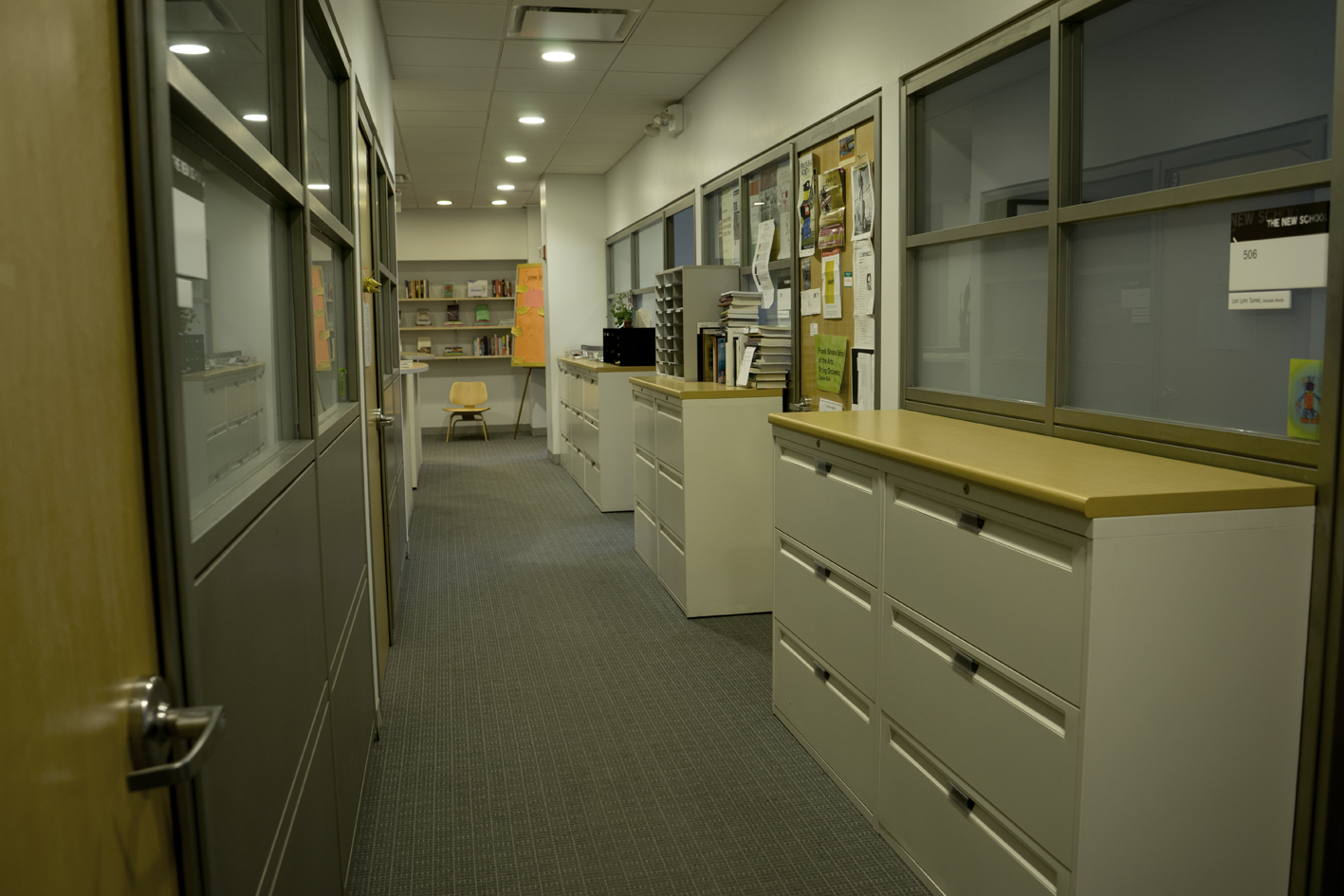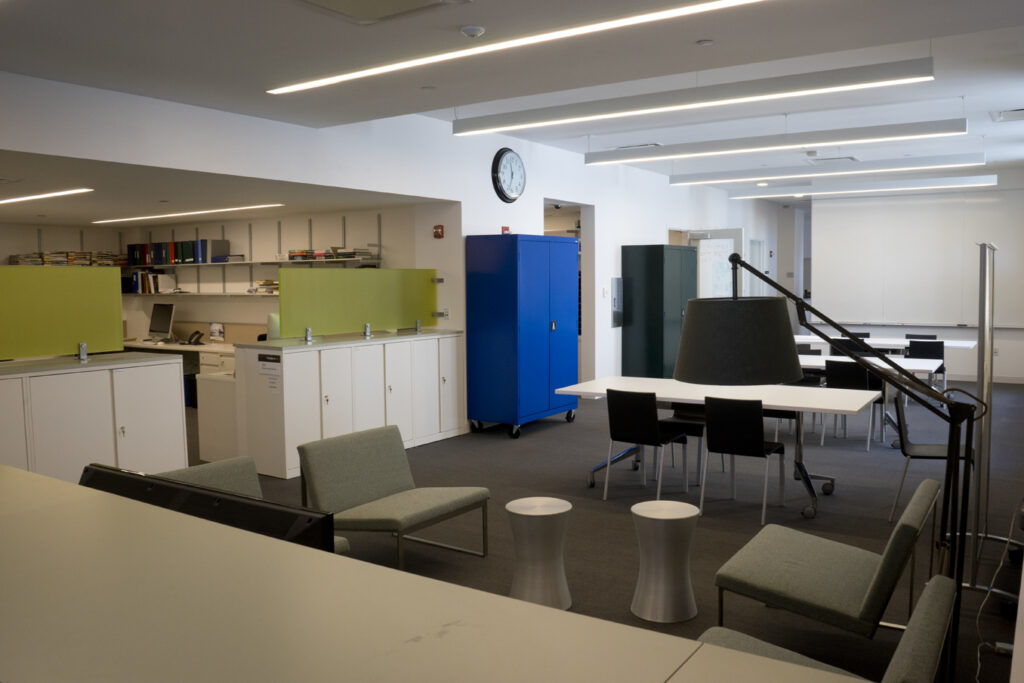

At the time, it seemed to be the ultimate offense to faculty office-ness: a combination of architectural surveillance and corporate dalliance. I had a weird pit in my stomach as I viewed the Bloomberg-style spaces that had found their way to the New School—no longer an institution able to lay claim to the New as it joined the Numerous. On that afternoon 10 years ago, standing in the freshly re-newed Writing Department faculty suite on the 5th Floor of 66 W. 12th, with post-construction scent still in the air, I was pained to see glass panes where privacy walls should be. No place for odd rituals that writers rightfully hide, no space for student tears and the struggles they confide. There was even a creepy memo to faculty about the importance of keeping their now always-in-view office desks neat! (It rivaled some of the best of The Onion!)
Amid inexorable anxiety about the spatialization of the ideological shift of the university, at our university, there emerged a clever, witty defiance, a simple yet delightfully brilliant act of passive resistance. As my colleagues moved into their new spaces, lovely pieces of Kate’s Paperie’s papers started to cover the panes. Then came newspapers: ratty, inky, messy—and made to be messier! The latter, apparently, was the last straw. The university architects caved. Translucent glass for all! Victory for the needs of faculty and their students!
But was it? 10 years later, my colleagues in the School of Media Studies moved onto the 16th Floor of 79 Fifth Avenue to find themselves wishing for what seemed disturbing 10 years ago. How great it would be to have walls, any kind of walls! How much can get done in a day spent in a pod, at a cubicle, with no quiet, no privacy, no way to turn down the lights to watch a student short that just enthusiastically arrived in your inbox? Who would have thought that at The New School, the neoliberalization of university space would come to this!? Even a colleague from MIT—the uber-creative university—was shocked to learn of this new development at the iconic New School. It was Sherry Turkle, at her post-talk-after-party in April, who couldn’t believe that we were sipping wine in a space that was in lieu of a proper faculty office!
What new kinds of creative, oppositional acts might help to turn the tide?
How might we have a real conversation about our space crunch that does not elide the uncritical pride of so-called “best practices”?
Even some of our Chelsea neighbors at Google are starting to ask: “Best for what, exactly?”
Rachel Heiman
Faculty, The New School for Public Engagement

